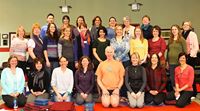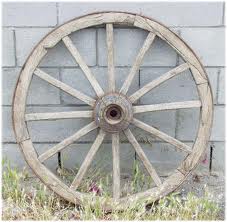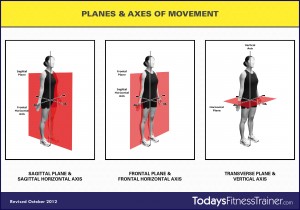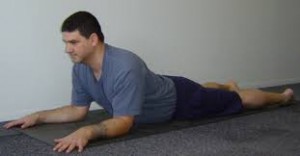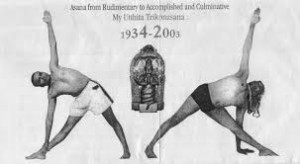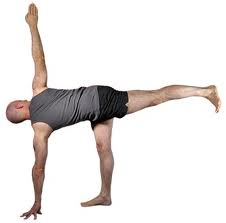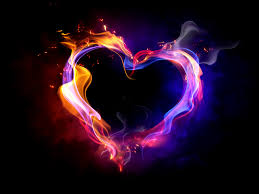 St John Yoga 2014
St John Yoga 2014
General Theme: Planting the seeds of, developing and stabilizing the toroidal field of the heart, using guided meditation, imagination and the basic yoga poses.
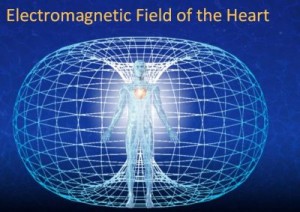
Heart Centering/ Cosmic Opening meditation:
Center awareness/attention in heart center and link to wholeness: One Heart / One Mind. Return to this as often as possible every day. Build strength and stability, using imagination, perception and structural awakening.
Things to note as you go through your practice and daily activities:
Quality of attention: dull, distracted or clear
Scope of attention: focal or open
Level of attention: Gross body, subtle/energy body, causal/light/cosmic fields body, Absolute/Infinite
Quality of self identification: small self vs holistic self
Flexibility of perspective: “stuck in one point of view” vs
“able to change perspectives or take on multiple perspectives”
Quality of energy: dull, erratic, steady
Energetic shapes and patterns to explore: circles and spheres, lines, arcs and curves,
toroidal fields: mushrooms, bagels, inverted cones, hour glass, flower of life
Which chakras dominate? Which feel neglected?
How do they relate / overlap in radial energies?
How does it feel when the chakra line, the center axis of the body is totally open and free,
crown and root chakras open to the cosmos and your heart?
This summary includes what we covered, possibly some stuff I am imagining, and leaves out lots I have forgotten. But it is a start….
Complimentary Theme: Opening the Chakra Line/Center Axis
Monday: Muladhara day! Connecting open heart to the three limbs of the root chakra (leg, leg, tail) for grounding. Also, sense of smell, element earth, color red, elimination.
While sitting: Find your heart – open to heaven and earth, feel the radiant sphere of light emanating from the heart surrounding you. Stabilize this field with 3 OMs.
In Tadasana: find your feet, like a skier or skater, as energy from the heavens passes through and down into the earth. Relax, let the energy flow through the whole body, into hands and feet, organs and cells. Find your root chakra at the bottom of the pelvis and connect to your legs and feet. With the help of your arms in an open hug, feel the chi field of the heart in the space in front of you. Let the grounding energy rise up and out the crown as well.
In Uttanasana, reach back through pelvic floor into an imaginary tail that grows longer and longer. Let the primary energy of the pose be down through the legs and back throughout he tail. Feel the trifurcation of the muladhara. Keep the upper body relaxed and alert through the crown, neither contracted nor collapsed. Explore moving in and out up and down, slowly until you begin to feel the hamstrings opening. To go deeper, move more slowly maintaining space for the tail to keep lengthening. If the tail get cut off, the pelvic and leg muscles will constrict. Stretching will not help! Open the muladhara gates to let the energy flow. Explore same action in wide dog (prasarita padottanasana). The muladhara feeds the tail and legs, from femurs to feet. To differentiate 1st chakra, open the hips joints and release the tail. The pelvis can be considered as part of the spine to help.
Trikonasana: Feet wide apart. Triangle is a lateral flexion pose, like a reptile or fish. From the open heart, rotate the pelvis and tail laterally, in an arc, reaching out through the tail to open the front hip. Now we can add the inner back heel to find a new link to the muladhara. Use trikonasana to go more deeply into the hip opening, keeping the ascending energy alive as well. Then,
Ardha Chandrasana: wall support for balance as we are looking for the energy line from heart to inner heel that continues the hip opening action. The inner heel awakens the tail energy and as the tail opens and stabilizes, the hip muscles begin to melt. No stretching is necessary. Just open energy lines into ground and space.
Revolved Ardha Chandrasana: from AC, sustain length along spinal axis-tail-inner back heel, as well as from the standing leg foot up through the pelvis. Without losing all of that, begin to rotate the pelvis in and out of PAC, carefully opening the outer hip muscles. *** Notice that only one side of the hip has to feel the movement. The standing leg stabilizes at the femur/foot/floor and that pelvic bone explores rotation around the femur head. No twisting at the sacral region is necessary. This movement is often compromised because of tight outs hip muscles and tissues, stemming from a lack of energetic support on the DFL, the inner groin line integrating with the core of the torso. Many sacro-iliac issues come from improper twisting action. The muladhara energy will open the hips and protect the sacrum.
Parsvakonasana: Using the feeling of the previous poses, move into and out of parsvakonasana solely through the muladhara action of back inner heel and tail, keeping the torso long, soft and open. The tendency for beginners is to move from the upper body. just move from the roots and let the rest of the body follow. Do not let the arms wander into strange, disconnected places.
Find the muladhara line, extending in both directions, through inner heels into: one leg dog, flipping the dog, hand stand and head stand. Transition through head balance, shoulder balance, or viparita karani into savasana. Homework: Use your tail when swimming. Try on different types of fish tails. Keep the energy moving.
 Afternoon class: Hanging out. Tie straps to long ballet bar and come into hanging or supported dog pose. Option 1. (shown on left) Wrap the belt around the top of the thighs to find the hip sockets. Option 2. (not shown) Wrap the belt around the pelvis and through the inner thighs so the belt creates a vector that mimics the tail, lifting back and up throughout the pelvis. In both cases, sustain extension through core chakra line, as well as hands and fingers.
Afternoon class: Hanging out. Tie straps to long ballet bar and come into hanging or supported dog pose. Option 1. (shown on left) Wrap the belt around the top of the thighs to find the hip sockets. Option 2. (not shown) Wrap the belt around the pelvis and through the inner thighs so the belt creates a vector that mimics the tail, lifting back and up throughout the pelvis. In both cases, sustain extension through core chakra line, as well as hands and fingers.
Transition to up dog while maintaining the tension in the belt. Feel the tail action to create a spinal curve slightly separate from the angle of the legs. Then explore up and down dog without the support, keeping the tail extending back, then one leg dog and flipping the dog.
Finally, lying on floor with the pelvis supported by the short side of a block.  (Shorter than what you see here! We are looking for horizontal and lateral space and length, not height through the pelvis.) Ground your feet and feel the heart energy extending into the legs and out the crown. Now add the tail, first extending it up and out to the ceiling to open the back body, and then out and down along the floor to release the front body. Between the two possibilities, find the center of the body, relax and open. Explore with different positions of the legs, and then on the floor. Add arms for happy baby/anemone pose. Savasana
(Shorter than what you see here! We are looking for horizontal and lateral space and length, not height through the pelvis.) Ground your feet and feel the heart energy extending into the legs and out the crown. Now add the tail, first extending it up and out to the ceiling to open the back body, and then out and down along the floor to release the front body. Between the two possibilities, find the center of the body, relax and open. Explore with different positions of the legs, and then on the floor. Add arms for happy baby/anemone pose. Savasana
Tuesday: 2nd Chakra day:
Sacral energy, water, flow. Differentiating sacrum from pelvis and legs. Also, sense of taste, color orange, sexuality. This begins the fish body.
Begin with meditation as Day 1. Repeat standing poses as above. Begin by opening muladhara in tadasana, extending in both directions, and standing forward bending poses/movements. Open the hip joints and free up the tail. With this as your base, then use trikonasana to begin to widen through pelvic bones to discover sacral freedom. The lateral flexion postures, trikonasana, parsvakonasana, ardha chandrasana, all help create lateral space and unlock the 2nd chakra energy. Find the circle of energy created by lateral flexion/extension. Let it radiate out through crown as well.
Keep differentiating tail energy. If you lose this, the hip muscles overwork and the sacral energy gets lost. To find the tail energy, see above. To find the sacral energy, the pelvic bones are now considered part of the legs, pelvis to feet. This frees up the sacral space.
Revolved Ardha Chandrasana to find the healthy ‘twisting /rotation for the sacral area. The sacra-illiac joints are not designed to rotate, but many sacral imbalances involve a torque or improper rotation, and twisting can help reset this to neutral. But it can also re- aggravate it. The pelvic bone has to be able to rotate over the femur. If this movement is blocked, don’t force the si’s to compensate. (See PAC from Monday).
Now trace PAC action into Parsvottanasana, pivoting on back big toe as necessary to clear the hips through the rotation. In PAC the foot is free to adjust, in parsvottanasna and revolved triangle, the foot is on the floor. Do not compromise the sacrum if the hip muscles are tight by not adjusting back foot. Star fish (opened up revolved parsvakonasana) offers a multiplicity of vectors for moving the energy. Even the Red Sox are including variations on this!
Now hanging dog to find the sacrum and really release out through crown. Feel the sacral bone like a bubble in a level. When in balance, the bubble floats in the middle ( in relationship to the pelvis, not the floor!). When out of balance, it tips up or down. Then hanging up dog, and then, on the floor, sphinx, cobra and up dog. Feel you way into the openings. Then normal dog pose, any dog variations, head and shoulder balance, or repeat any standing poses that invite you, and transition to relaxation.
Afternoon: Lying pelvis on block, sacrum like the bubble in a level. Feel open channels from the cosmos through crown and root chakras.
Sphinx. Feel tail separate from pelvis. Keeping arms in place, push back like going to down dog, lifting your butt up and back. Then leaving your imginary tail up in space, slide the pelvis down and forward to return to sphinx. Repeat this is cobra and up dog until the spine releases from the pelvis at the SI joints. Try same in
Wednesday: 3rd Chakra day: Standing Poses: Solar plexus, chi gong circles.
Color yellow, like the sun, sense of sight, eyes, element fire, digestion.
Begin with meditation as Day 1. Repeat standing poses as above, opening muladhara, then begin to widen through pelvic bones. Then Chi circles to open/round the thoracic spine/chest cavity by moving the 3rd chakra up and out the crown and down and out the tail and legs. We all have strong tendencies to flatten the thoracic to create the illusion of lifting the heart/chest so please discourage this. Explore circles up to lift, down to ground.
Add chi circles to move in and out of parsvottanasana and revolved triangle, in a singular movement, not a series of separate ones. Keep 3rd chakra energy going in both directions.
Then lying on block as seen above, draw energy from muladhara up through 2nd chakra, third chakra and into heart/chest cavity. Expand and release arms and head.
 Then sitting, maha mudra, as per LOY. Feel the energy coming up to heart, but not brain. Do each side a few times to your capacity. Then return to the standing poses, create a similar feel, and compare the energy. If you are doing inversions, connect 3rd charka energy to legs in head and shoulder balance. Do not hang out. Transition to savasana in whatever way you desire.
Then sitting, maha mudra, as per LOY. Feel the energy coming up to heart, but not brain. Do each side a few times to your capacity. Then return to the standing poses, create a similar feel, and compare the energy. If you are doing inversions, connect 3rd charka energy to legs in head and shoulder balance. Do not hang out. Transition to savasana in whatever way you desire.
Afternoon. More maha mudra and antara kubhaka to awaken navel and lift to heart.
Begin with pelvis on block, opening core line from heart to cosmos and back. Using subtle action of the feet, get wave moving through fluids up and down the channel, stretching, opening the diaphragm, liver, intercostals, etc.. Then add HU breath from Emilie Conrad’s Continuum. Bring the water to the fire.
In sitting janu sirsasana, maha mudra as chi circles, with retention after inhalation, keeping upper gates open to circulate the chi/prana, feeling energy moving through tissues from chakra 3 to 4 and looping back. Try both up and down circles. Then, hanging dog on ballet bar to let gravity help the energy channels expand the tissues through 3 and 4th chakra regions.
Thursday: Anahata (Heart) Chakra, element air, color green, Universal Heart/Mind, center of all centers, starting point of awakening
AM: Begin with meditation as Day 1to open field and clear channels.
Standing poses to bring heart energy to and open lower chakras: chi gong circles to awaken 3rd chakra, standing poses again to fill heart energy field.
Now bringing heart energy up the chakras 5, 6 and 7, with: hanging dog, up dog, supported standing drop backs from the ballet bar. Then, to the floor for sphinx, cobra, up dog, dhanurasana and urdhva dhanurasana for those who are comfortable. From standing, natarajasana with belt.  Feel heart energy transitioning up through throat to support head. In back bends, feel heart energy extending in both directions, out through crown and root, to complete an imaginary circle. If you are a yoga pro, the circle is not longer imaginary.
Feel heart energy transitioning up through throat to support head. In back bends, feel heart energy extending in both directions, out through crown and root, to complete an imaginary circle. If you are a yoga pro, the circle is not longer imaginary.
(But do not cheat by 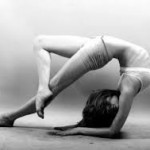 compressing spine like this pose to the left. There is a kink in the energy channel at chakra 3. Spinal hyper flexibility needs to back off and organ flexibility enhanced here.)
compressing spine like this pose to the left. There is a kink in the energy channel at chakra 3. Spinal hyper flexibility needs to back off and organ flexibility enhanced here.)
Transition through down dog and uttanasana to release spinal tension. Gentle seated or lying twist, then savasana.
Afternoon: heart to arms, finding open channels to integrate arms to heart and whole.
lying, either flat or with pelvis lifted on the block (low, not high) balance the sacrum and skull, like a bubble in a level, open crown and root chakras from heart into cosmos, then..
explore floating arms as they emerge from the heart field. Find/create chi sphere in front of heart.. feel the field as it supports to arms
integrating supination/pronation through forearms
integrating humerus rotation in arm movements, then explore in dog pose and variations.
breathing from ribs, expanding chest/intercostals, letting diaphragm slow down and relax
Friday AM: Throat Chakra: soft tissue, muscles and bones, voice, speech, spaciousness, opening to gut body, vowel sounds to open space for vibration, voice, breath, WOW sounds
Cervical curve is first of the secondary curves to emerge. Very old karma in neck region! Appears along with nursing!
Begin with meditation as Day 1. Then, lying down with tail bone very slightly elevated, begin to release back body into the floor. Then raise legs and begin to come into urdhva pascimottanasana, widening the legs if necessary to help release spinal muscles. Then elevate arms to help open upper thoracic vertebrae.
Come to tadasana and then begin to come into utkatasana to feel femurs grounding, sitting bones lifting. Come around the corner into uttanasana but keep the ribs in contact with the thighs. No gap! At first legs are flexed at the knees, but gradually open the backs of the legs without disturbing the spine. Interlude: bakasana for those who can. Then jumping into chaturanga smoothly.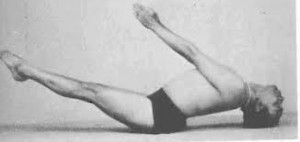
Hanging dog to deepen groins and release spine further.
Working toward uttana padasana to discover the connection between the lumbar and cervical curves and the opening of the front line of the body. Begin lying on floor, knees bent, feet in toward sitting bones. Roll/extend/lengthen pubic bones into floor creating a sacral arch and watch how, if relaxed, the skull will rotate in the opposite direction leaving the liver/heart as the keystone of an arch along the front of the spine. Add the arms as above to fine tune cervicals. Add legs to fine tune lumbar.
Bring this feeling into sphinx series including cobra and up dog. Keep heart lifting into throat. Most beginning students try to use the skull and over stretch the front throat and contract the back of the neck. Carry lift through inner ears to lift 6th chakra and on through crown.
Transition through uttanasana to savasana.
PM: From 5th to 6th Chakra: Heart through throat into inner ears, base of cranium, allowing sphenobasilar junction to breathe. Soften all sensory portals.
Lying down, feet suspended from rails, open heart and release through crown and root chakras to open core channel. Balance sacrum and skull like the bubble of a level. Gradually lengthen core line out beyond head and tail. Wait for 10 minutes to let this settle and grow. Then begin to lower the feet into a supported baddha konasana, feet in belt, hands supporting thighs to move quads towards knees as femur bones sink into floor. When relaxed and open, release arms to side. Let the breath begin to create lateral space as right and left sides release away from center line. Release inner ears and inner groins simultaneously. Find the connection. Release shoulder blades and let the sides of the skull move like the doors of a DeLorean car. Feel heart throat and 6th chakra opening relaxing breathing. Find vast open lateral space.
Lying over rolled up mat along spine, build a field of awareness above and below, like an angel fish. Use imaginary chi circles to help feel the circular field. When full, begin to allow breath to fill a 3 dimensional space receiving and releasing effortlessly into the field.
Next allow breath to flow from outside inward on in-breath and inside outward during the out breath. No structure moving, but receiving the energy in and out.
Open attention: ask the body what it needs to complete the class.
Saturday AM: Begin with meditation ans in day 1. Then, review:
All standing poses: open and ground through lower chakras, legs, tail. Widen through hips to release sacrum, 2nd chakra. Open core from and through heart, up and down the line.
Find how chakras can be paired out from heart center:
3 and 5: lots of movement and confusion here;
open the secondary curves and involve the gut body, liver, aorta, vena cava
2 and 6: the cranio-sacral chakras, very little movement. Balance like a bubble in a level at each
1 and 7: the cosmic chakras, open to the whole universe through here
Dog pose and variations. Inversions if you are practicing. Find the stillness in every pose.
transition to savasana.
Saturday PM: Wave motion in the body to integrate the chakras and heart field.
Mammalian or saggital waves: uttanasana as waves, up and down, either moving in and out of pose, or remaining down and subtly rising and falling. No jerkiness, just fluidity.
Hanging dog; use the support to create longs fluid waves extending out crown and fingers.
 Suspend feet from belt on ballet bar for lying fish body. Create lateral wave motion, like a fish. Feel it passing all the way through you, softly, effortlessly. Explore on floor without belt.
Suspend feet from belt on ballet bar for lying fish body. Create lateral wave motion, like a fish. Feel it passing all the way through you, softly, effortlessly. Explore on floor without belt.
 Finally, spiral waves. Part 1: Horizontal spirals: in any sitting pose, begin the the 1st chakra and ask it which way it wants to release, clockwise, or counterclockwise. Then allow it to spiral out in that direction, like a pebble dropped in a lake, like the spiral arms of a galaxy. This is not a muscular or structural twist. Let the energy move through a relaxed body. Be fluid and receptive. Repeat for each chakra, allowing all others to be relaxed and receptive.
Finally, spiral waves. Part 1: Horizontal spirals: in any sitting pose, begin the the 1st chakra and ask it which way it wants to release, clockwise, or counterclockwise. Then allow it to spiral out in that direction, like a pebble dropped in a lake, like the spiral arms of a galaxy. This is not a muscular or structural twist. Let the energy move through a relaxed body. Be fluid and receptive. Repeat for each chakra, allowing all others to be relaxed and receptive.
Part 2: Upward spirals. Beginning with chakra 1. allow the chakra to rotate in its preferred direction and this time feel it rising up through the crown and beyond, and then down through the root and beyond. Feel what parts of the body let go effortlessly, which resist, which want to help. Explore each chakra this way. Try the opposite direction for comparison.
Upward spirals. Beginning with chakra 1. allow the chakra to rotate in its preferred direction and this time feel it rising up through the crown and beyond, and then down through the root and beyond. Feel what parts of the body let go effortlessly, which resist, which want to help. Explore each chakra this way. Try the opposite direction for comparison.
Savasana: open to the cosmos, feel your wholeness.

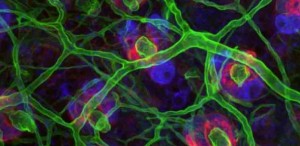 except my strong urge to experience our essential bio-lineage and my certainty that our existences were fed far beyond our cultural moorings. It is my belief that we carry in our cells, in our tissues, in the very throb of our existence an underlying flow that urges, inspires, flares our nostrils and beats our heart. This encompassing atmosphere of love has its own destiny — perhaps using humans as its messengers, this love has arrived on Earth.
except my strong urge to experience our essential bio-lineage and my certainty that our existences were fed far beyond our cultural moorings. It is my belief that we carry in our cells, in our tissues, in the very throb of our existence an underlying flow that urges, inspires, flares our nostrils and beats our heart. This encompassing atmosphere of love has its own destiny — perhaps using humans as its messengers, this love has arrived on Earth.













